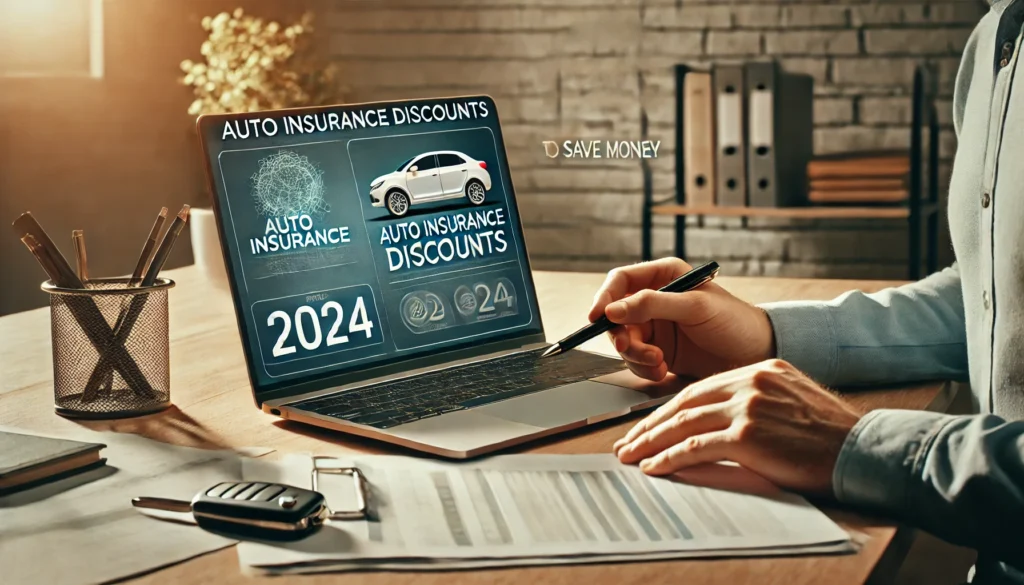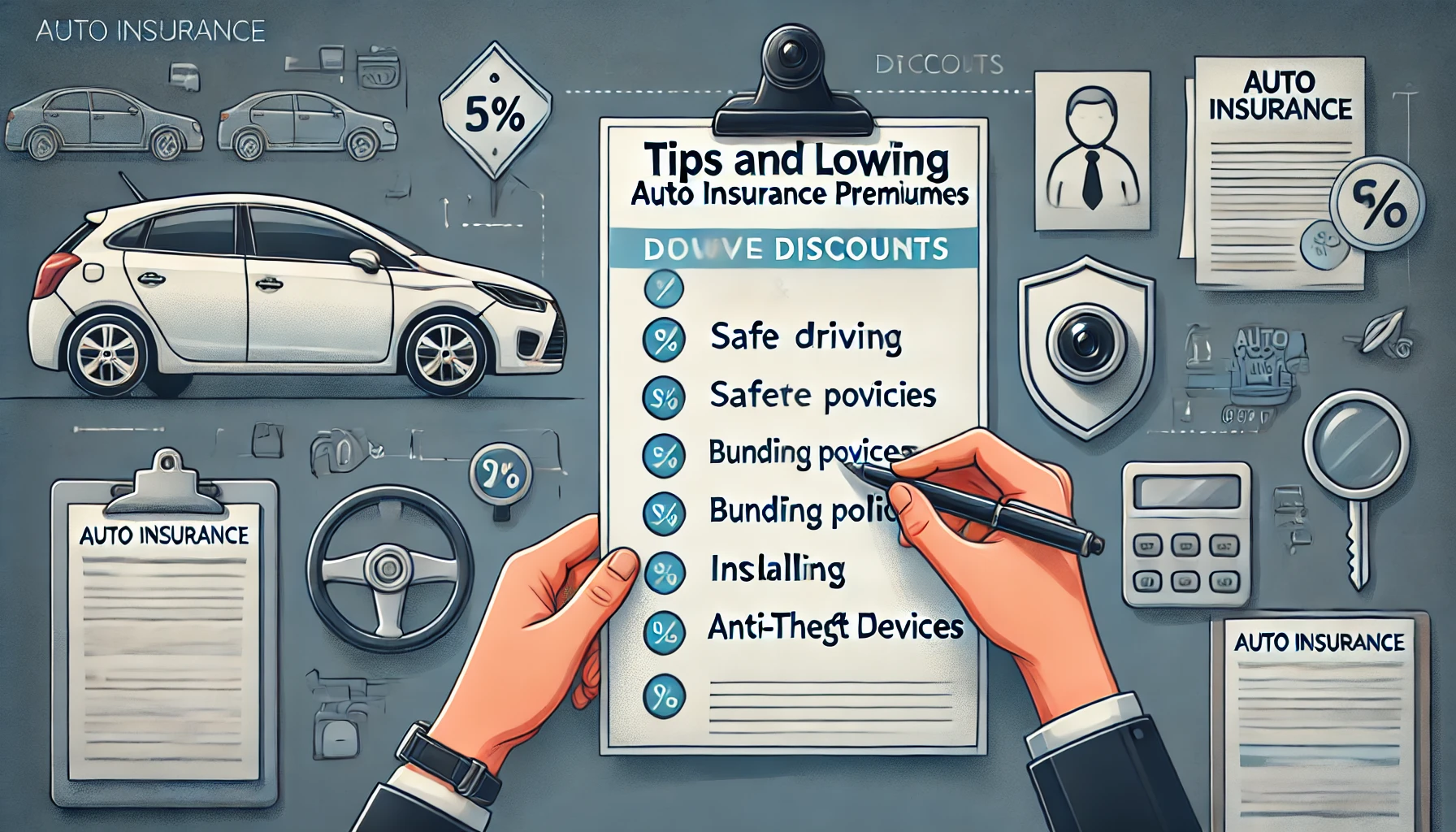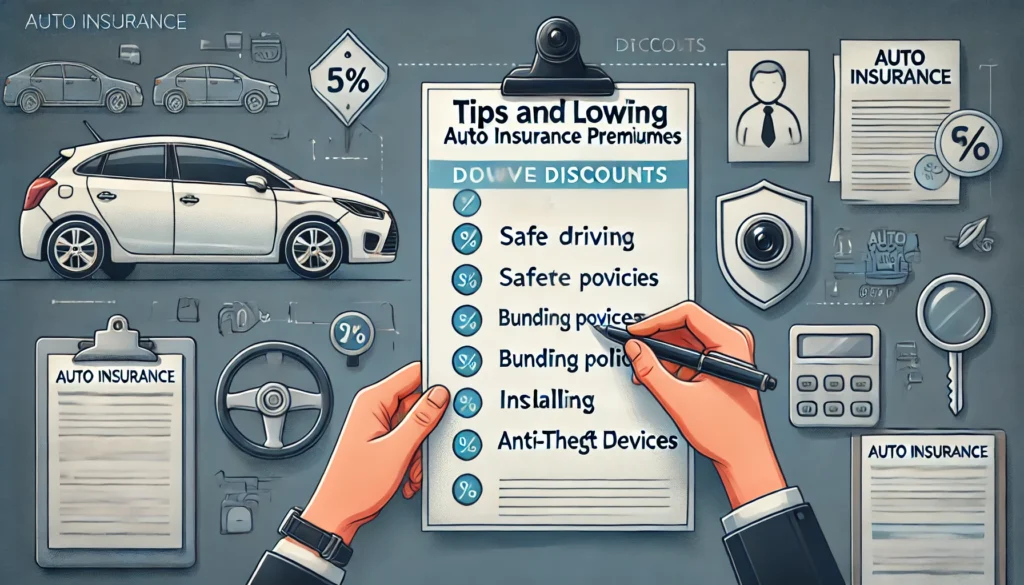- Introduction to Auto Insurance Discounts
- Why Discounts Matter: Explain the significance of auto insurance discounts in helping policyholders lower their premium costs, especially as insurance rates continue to rise due to inflation and higher repair costs.
- The Challenge of Finding Lesser-Known Discounts: Discuss why many people miss out on discounts, often due to a lack of information or the complexity of insurance policies.
- Overview of Article Focus: Briefly introduce the five main types of auto insurance discounts covered in the article, encouraging readers to explore which discounts might apply to them.
- Discount #1: Good Driver Discount
- What is a Good Driver Discount?: Define the good driver discount, which is awarded to drivers who maintain a clean driving record, typically free from accidents and traffic violations over a set period.
- Eligibility Requirements: Outline the typical eligibility criteria, such as having no accidents or moving violations for three to five years, and explain how insurers evaluate driving records.
- How Much You Can Save: Provide examples of potential savings, which can range from 10% to 30% depending on the insurance provider.
- Tips for Qualifying as a Good Driver: Offer tips to help drivers maintain a clean record, such as avoiding risky driving behaviors, taking defensive driving courses, and using telematics to monitor safe driving.
- Additional Benefits of Good Driving: Highlight how a clean driving record can lead to other benefits, such as eligibility for accident forgiveness programs or preferred rates with insurers.
- Discount #2: Multi-Policy Discount (Bundling)
- What is a Multi-Policy Discount?: Define the multi-policy discount, which rewards policyholders for bundling multiple insurance products (e.g., auto and home insurance) with the same provider.
- Eligibility Requirements and Common Bundling Options: Describe typical bundling options like auto and homeowners insurance, auto and renters insurance, or even combining auto with life or health insurance policies.
- How Much You Can Save: Share examples of potential savings, which can range from 5% to 25% for each policy bundled, making it one of the most cost-effective ways to reduce premiums.
- Tips for Maximizing Multi-Policy Discounts: Suggest practical ways to optimize this discount, such as comparing bundled packages across insurers, asking for bundling options when renewing policies, and checking whether other family members’ policies can be bundled.
- Additional Advantages of Bundling Policies: Explain other benefits of bundling, such as simplified billing, coordinated customer service, and potential loyalty discounts for long-term customers.
- Discount #3: Low Mileage Discount
- What is a Low Mileage Discount?: Define the low mileage discount, which applies to drivers who use their vehicles less frequently, resulting in lower accident risk.
- Eligibility Requirements and How Mileage is Tracked: Describe how insurers determine eligibility, such as through odometer readings, GPS tracking, or telematics devices that monitor miles driven.
- How Much You Can Save: Provide examples of possible savings, which can range from 5% to 20% depending on how low the annual mileage is and the insurer’s requirements.
- Tips for Qualifying for Low Mileage Discounts: Offer strategies like carpooling, using public transit, or reducing unnecessary driving to help meet low mileage thresholds.
- Benefits of Usage-Based Insurance (UBI): Discuss the advantages of usage-based insurance, which often includes low mileage discounts, and how UBI programs can provide more personalized savings based on actual driving behavior.
- Discount #4: Good Student Discount
- What is a Good Student Discount?: Explain the good student discount, which offers savings for young drivers who maintain good grades in school, reflecting responsibility and lower risk.
- Eligibility Requirements for Students: Outline the criteria for this discount, which often includes maintaining a GPA of 3.0 or higher, being a full-time student, and providing proof of academic achievement.
- How Much You Can Save: Share examples of savings, typically between 5% and 25%, which can make a substantial difference for parents insuring teenage or young adult drivers.
- Tips for Students and Parents: Provide advice for students on maintaining the required GPA, and for parents on ensuring they submit report cards or transcripts to the insurer to receive the discount.
- Other Discounts for Young Drivers: Mention additional discounts that may apply to young drivers, such as driver training discounts or telematics-based discounts for safe driving.
- Discount #5: Safety and Anti-Theft Device Discounts
- What Are Safety and Anti-Theft Device Discounts?: Describe how installing safety features (e.g., airbags, anti-lock brakes) and anti-theft devices (e.g., alarms, tracking systems) can lead to discounts due to reduced risk.
- Eligibility and Types of Devices That Qualify: List common safety and anti-theft devices that qualify for discounts, such as electronic stability control, GPS tracking, steering wheel locks, and comprehensive alarm systems.
- How Much You Can Save: Provide potential savings estimates, which can range from 5% to 20% depending on the devices installed and the insurer’s policy.
- Tips for Maximizing Safety Device Discounts: Suggest easy ways to qualify, such as retrofitting older vehicles with affordable anti-theft devices, installing tracking systems for additional savings, and consulting with insurers about approved safety features.
- Other Benefits of Enhanced Safety Features: Explain that beyond savings, these features can also enhance resale value, improve vehicle security, and reduce overall risk of loss.
- How to Identify and Apply for Hidden Auto Insurance Discounts
- Researching Available Discounts: Encourage readers to research discounts directly through their insurance provider’s website or by speaking with an agent to learn about all potential discounts.
- Asking for Discounts at Renewal: Recommend asking about available discounts every time a policy is renewed, as new discounts may become available or eligibility requirements may have changed.
- Combining Discounts for Maximum Savings: Explain that many insurers allow stacking of multiple discounts, such as combining good driver and multi-policy discounts for increased savings.
- Using Telematics Programs to Access Additional Savings: Suggest considering telematics programs that reward safe driving with further discounts, such as pay-as-you-drive or pay-how-you-drive programs that monitor driving habits.
- Reviewing Your Policy Annually: Emphasize the importance of an annual review to ensure discounts are applied accurately and that new savings opportunities are identified.
- Additional Tips for Reducing Auto Insurance Costs Beyond Discounts
- Choosing the Right Coverage Levels: Explain how adjusting coverage levels, such as opting for higher deductibles, can help reduce premium costs.
- Maintaining a Clean Driving Record: Highlight that a clean driving record not only qualifies for good driver discounts but also prevents rate hikes due to accidents or violations.
- Opting for Vehicles with Lower Insurance Costs: Describe how choosing vehicles with high safety ratings and low repair costs can lower insurance premiums.
- Paying Premiums Annually: Mention that some insurers offer a discount for paying premiums in full rather than in monthly installments, saving on financing fees.
- Improving Credit Score: Explain how, in most states, a good credit score can help reduce insurance premiums as insurers view good credit as an indicator of lower risk.
- Real-Life Scenarios: Maximizing Auto Insurance Discounts
- Scenario 1: A Family Bundling Home and Auto Insurance: Describe how a family bundles home and auto insurance for significant savings, while also applying a good driver discount.
- Scenario 2: A Young Driver Leveraging Good Student and Telematics Discounts: Share a case where a student driver uses both the good student and telematics discounts to lower their premiums.
- Scenario 3: A Low-Mileage Retiree Using Usage-Based Insurance: Illustrate how a retiree who drives infrequently saves on insurance by enrolling in a low-mileage and pay-as-you-drive program.
- Scenario 4: A Vehicle Owner Adding Anti-Theft Devices for Savings: Describe how an individual saves by installing anti-theft devices and qualifying for a safety feature discount.
- Scenario 5: An Annual Policy Review Uncovering Hidden Discounts: Show how a policyholder saves by conducting an annual review, discovering new discounts and ensuring all applicable discounts are being utilized.
-
11. Advanced Strategies for Maximizing Auto Insurance Discounts
- Combining Multiple Discounts for Greater Savings: Explain how stacking eligible discounts, such as combining the good driver, multi-policy, and low mileage discounts, can significantly lower premiums.
- Leveraging Telematics-Based Discounts for Additional Savings: Discuss how enrolling in usage-based insurance programs (like pay-as-you-drive) can offer further discounts for safe drivers, and how these programs often reward low mileage as well.
- Discounts for Paying in Full and Avoiding Fees: Mention that many insurers offer a discount for paying the full premium upfront, which avoids financing fees associated with monthly installments.
- Discounts for Loyalty and Long-Term Policyholders: Some insurers provide loyalty discounts or rate reductions for long-term customers. Describe the benefits of asking insurers about loyalty programs and comparing them to new customer discounts.
- Customizing Deductibles and Coverage Limits to Lower Costs: Suggest that policyholders consider adjusting deductibles and coverage limits to balance savings with necessary protection. Raising the deductible can reduce premiums, but only if it fits within the policyholder’s budget for out-of-pocket costs.
12. Common Mistakes to Avoid When Applying for Discounts
- Not Asking About All Available Discounts: Explain that many policyholders miss out on discounts because they don’t ask their insurer or agent about every possible option.
- Overlooking Potential Discounts Due to Poor Communication: Discuss the importance of clear communication with insurers, as some discounts require specific eligibility details (like mileage or student grades) to be confirmed.
- Failing to Review Discounts Annually: Remind readers that discounts can change over time, and an annual policy review ensures that they’re taking advantage of all applicable discounts.
- Neglecting to Report Life Changes: Explain that life changes, such as getting married, moving to a new area, or taking a defensive driving course, can often qualify for additional discounts if reported to the insurer.
- Focusing Only on Discounts at the Expense of Coverage: Caution readers against sacrificing necessary coverage to save on premiums and encourage them to prioritize adequate protection alongside discounts.
13. Frequently Asked Questions About Auto Insurance Discounts
- Do All Insurance Companies Offer the Same Discounts?: Answer by explaining that discounts vary by provider, and some insurers may offer unique discounts based on their specific policies and customer demographics.
- Can I Combine Multiple Discounts on My Policy?: Provide a brief answer that explains how stacking multiple discounts is often allowed and can lead to significant savings.
- What is the Best Way to Find Hidden Discounts?: Recommend speaking directly with an insurance agent or using online tools to explore all potential discounts based on individual factors.
- Are Discounts Available for Senior Drivers?: Mention that many insurers offer discounts for senior drivers who maintain a clean record, drive infrequently, or complete safe driving courses.
- Can Discounts be Applied Mid-Policy, or Only at Renewal?: Explain that some discounts can be applied mid-policy, such as those related to life changes, while others might only take effect at policy renewal.
14. Steps for Reviewing and Ensuring All Discounts Are Applied
- Reviewing Discounts with an Insurance Agent Annually: Emphasize the importance of a yearly review with an agent to verify that all available discounts are applied and to explore new discounts based on life or policy changes.
- Using Online Comparison Tools to Explore Discount Options: Suggest that policyholders use online comparison sites or tools to view various insurance companies’ discount options and ensure they’re receiving the most competitive rates.
- Regularly Tracking and Reporting Changes: Remind readers to report any life changes, such as changes in mileage, completing a driving course, or adding safety devices, to keep all possible discounts active.
- Asking for Written Confirmation of Discounts: Advise readers to request a written summary of their discounts from the insurance company, ensuring clarity on each applied discount and preventing accidental removal during renewals.
- Switching Providers if Better Discount Packages Are Available: Encourage readers to periodically compare their current provider’s offerings with competitors to see if switching could yield more savings through better discounts or bundling options.
Conclusion
Auto insurance discounts are an essential tool for reducing premiums and maximizing savings on coverage. By taking the time to understand and apply the top five discounts—good driver, multi-policy, low mileage, good student, and safety device discounts—drivers can enjoy meaningful cost reductions without sacrificing the protection they need. Many policyholders miss out on these savings simply because they aren’t aware of their eligibility or don’t take the time to explore all available options.
To fully benefit from discounts, it’s essential to be proactive: conduct an annual review of your policy, communicate any changes with your insurer, and ask about additional ways to save. Combining multiple discounts, enrolling in telematics programs, and bundling policies can lead to significant long-term savings, all while maintaining necessary coverage. By following these steps, drivers can make informed decisions that keep their auto insurance both affordable and comprehensive.
Taking advantage of discounts not only saves money but also allows policyholders to secure the best value for their auto insurance investment. With regular reviews and strategic use of available discounts, drivers can stay protected on the road and manage their auto insurance expenses with confidence.
Top 5 Auto Insurance Discounts You Could Be Missing Out On











